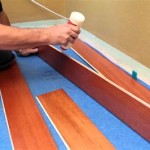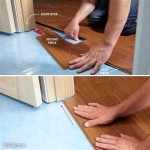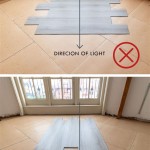Understanding the Home Depot Vinyl Flooring Calculator
Vinyl flooring is a popular choice for homeowners due to its durability, affordability, and ease of installation. When planning a vinyl flooring project, accurately estimating the required materials is crucial to avoid material shortages or excess inventory. Home Depot offers a vinyl flooring calculator as a tool to assist in this process. This article provides a comprehensive guide to understanding and utilizing the Home Depot vinyl flooring calculator effectively.
The Home Depot vinyl flooring calculator is a digital tool designed to help users determine the amount of vinyl flooring needed for a specific project. It considers the dimensions of the room, accounting for waste and pattern matching, to provide an accurate estimate. This tool simplifies the process of material estimation, reducing the risk of under- or over-purchasing materials. The calculator is accessible through the Home Depot website and is generally free to use.
Key Point 1: How to Access and Use the Home Depot Vinyl Flooring Calculator
Accessing the Home Depot vinyl flooring calculator is straightforward. Begin by navigating to the Home Depot website. Use the search bar and enter phrases like "vinyl flooring calculator" or "flooring calculator." The calculator should appear as one of the top search results. Alternatively, you can often find the calculator linked from the product pages of various vinyl flooring options available on the site.
Once you have located the calculator, you will typically be presented with a user interface that prompts you for specific information about your project. This information includes:
- Room Dimensions: The length and width of the room in feet or inches. Accurate measurements are critical for accurate calculations.
- Unit of Measurement: Choose the unit of measurement you are most comfortable with, typically feet or inches. Consistency in measurement units is crucial.
- Waste Factor: This is a percentage that accounts for material lost during cutting and installation. A higher waste factor is recommended for rooms with irregular shapes or complex patterns.
- Pattern Repeat (if applicable): If you are using patterned vinyl flooring, enter the pattern repeat measurement. This allows the calculator to account for the extra material needed to align the pattern correctly.
After entering all the required information, click the "Calculate" button. The calculator will then provide an estimate of the total square footage of vinyl flooring required for the project. Some calculators also provide an estimate of the number of planks or tiles needed, depending on the type of vinyl flooring selected.
It's essential to double-check all measurements before submitting them to the calculator. Small errors in measurements can lead to significant discrepancies in the final estimate. Consider drawing a rough sketch of the room and noting the measurements on the sketch to ensure accuracy.
Key Point 2: Understanding the Factors Affecting Vinyl Flooring Calculations
Several factors can influence the accuracy and reliability of the vinyl flooring calculation. Understanding these factors is essential for obtaining a realistic estimate of the required materials.
Room Shape: Rooms with simple rectangular shapes are easier to calculate than rooms with irregular shapes, such as L-shaped rooms or rooms with alcoves. For irregularly shaped rooms, it may be necessary to divide the room into smaller, more manageable rectangular sections and calculate the square footage of each section separately. Then, add the square footage of each section to obtain the total square footage.
Waste Factor: The waste factor is a percentage that accounts for material lost during cutting and installation. A higher waste factor is recommended for rooms with intricate layouts or diagonal installations. A typical waste factor ranges from 5% to 15%, but it may be higher for more complex projects. Consider increasing the waste factor if you are inexperienced with vinyl flooring installation or if the project involves intricate designs.
Pattern Matching: Patterned vinyl flooring requires extra material to ensure that the pattern aligns correctly across the floor. The pattern repeat measurement is the distance between repeating patterns. When using patterned vinyl flooring, enter the pattern repeat measurement into the calculator to account for the additional material needed for pattern matching.
Direction of Installation: The direction in which the vinyl flooring is installed can also affect the amount of material needed. For example, if the flooring is installed diagonally, more material will be required than if it is installed parallel to the walls. Consider the direction of installation when determining the waste factor for the project.
Subfloor Conditions: The condition of the subfloor can also impact the accuracy of the calculation. An uneven subfloor may require additional material to level the surface before installing the vinyl flooring. This could involve self-leveling compound or underlayment. Failure to address subfloor issues can lead to problems with the finished floor, such as unevenness, cracking, or premature wear. In some cases, it might be prudent to consult with a flooring professional to assess the subfloor and provide recommendations for preparation.
Seam Placement: Strategically planning the placement of seams can minimize waste. Aim to position seams in areas that are less visible or where they will be covered by furniture. Proper seam placement not only reduces waste but also enhances the overall aesthetic appeal of the finished floor.
Key Point 3: Limitations of the Home Depot Vinyl Flooring Calculator and Alternatives
While the Home Depot vinyl flooring calculator is a useful tool, it has limitations. It is essential to be aware of these limitations and consider alternative methods for estimating materials when necessary.
Simplification: The calculator relies on basic measurements and assumptions. It may not accurately account for complex room features, such as curved walls, doorways that are not perfectly square, or unusual architectural details. In such cases, the calculator’s estimate may be inaccurate.
Generic Waste Factor: The calculator typically uses a generic waste factor that may not be appropriate for all projects. The actual waste factor can vary depending on the complexity of the installation, the skill of the installer, and the specific type of vinyl flooring used.
Lack of Customization: The calculator may not allow for customization based on specific project requirements. For example, it may not be possible to adjust the waste factor for different areas of the room or to account for the use of multiple vinyl flooring products.
Alternative Methods: When the Home Depot vinyl flooring calculator is insufficient, consider these alternative methods:
- Manual Calculation: Calculate the square footage of the room manually using basic geometry formulas. Account for any irregular shapes by dividing the room into smaller sections and calculating the area of each section separately. Add the areas to obtain the total square footage. Adjust the result by the estimated waste factor. This method requires careful attention to detail and accurate measurements.
- Professional Consultation: Consult with a flooring professional. A professional can assess the project requirements, provide accurate measurements, and recommend the appropriate amount of vinyl flooring. This option is especially beneficial for complex or large-scale projects. Professionals often have experience with a wide range of flooring products and installation techniques, enabling them to provide tailored recommendations.
- Specialized Software: Utilize specialized flooring software or design tools. These tools often offer more advanced features, such as the ability to create detailed floor plans, simulate the installation process, and generate precise material estimates. However, these tools may require a subscription or a one-time purchase.
Accuracy and Verification: Regardless of the method used, it is essential to verify the accuracy of the estimate. Double-check all measurements, review the calculations, and consider consulting with a professional for confirmation. An inaccurate estimate can lead to material shortages, delays, and additional expenses.
Material Considerations: Different types of vinyl flooring may have varying installation requirements and waste factors. For example, some vinyl flooring products may require special adhesives or underlayment. Consult the manufacturer's instructions for specific recommendations. Consider the width and length of the vinyl planks or tiles when calculating the number of pieces needed. Smaller planks or tiles may result in more waste than larger ones.
In summary, the Home Depot vinyl flooring calculator is a valuable tool for estimating the amount of vinyl flooring needed for a project. By understanding how to use the calculator effectively and being aware of its limitations, homeowners can make informed decisions about material purchases and ensure a successful flooring installation. Remember to consider all relevant factors, such as room shape, waste factor, pattern matching, and subfloor conditions, when estimating materials. When in doubt, consult with a flooring professional for expert advice and assistance.

Vinyl Plank Flooring The Home Depot

Trafficmaster Grayson Wood 5 Mil 12 Ft W X Cut To Length Waterproof Vinyl Sheet Flooring U5250405k792g14 The Home Depot

Vinyl Plank Flooring The Home Depot

Have A Question About Trafficmaster White Oak Residential Vinyl Sheet Flooring 10 Mil 12 Ft Wide X Cut To Length Pg 5 The Home Depot

Vinyl Plank Flooring The Home Depot

How To Install Luxury Vinyl Plank Flooring Top Shelf Diy

Vinyl Plank Flooring The Home Depot

Lifeproof Trail Oak 22 Mil X 8 7 In W 48 L Lock Waterproof Luxury Vinyl Plank Flooring 20 1 Sqft Case

Islander Take Home Sample Stagecoach Vinyl Flooring 5 91 In X 6 Hdpc Stacoa S The Depot

Trafficmaster Autumn Brown Oak Residential Vinyl Sheet Flooring 5 Mil 12 Ft Wide X Cut To Length U9160405k743g14 The Home Depot
Related Posts








